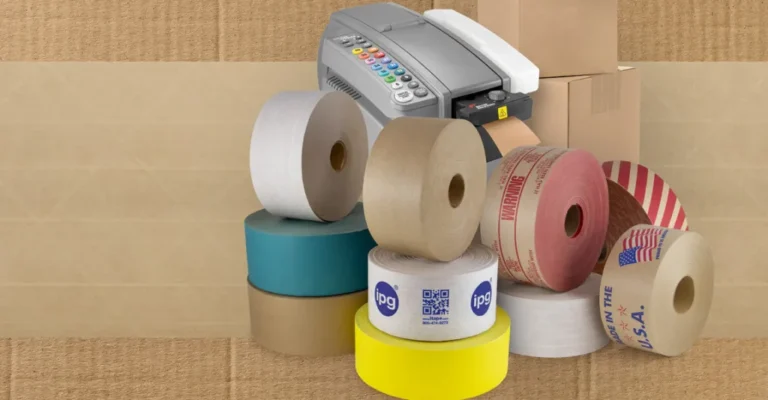
Why Water-Activated Tape Could Be the Upgrade Your Packaging Operation Needs
July 18, 2025
0 Comments
When it comes to securely sealing packages, especially for e-commerce or industrial shipping, not all tape is created equal. Water-activated tape (WAT)—also known as gummed paper tape—has quickly gained traction in modern packaging operations due to its strength, efficiency, and sustainability. Unlike plastic pressure-sensitive tape, WAT forms a permanent bond with corrugate when moistened, delivering superior performance in a range of use cases. But like any solution, it comes with both benefits and trade-offs.
The Benefits of Water-Activated Tape
One of the key advantages of WAT is its superior strength, making it ideal for heavier boxes or high-value shipments. Once applied, the tape fuses with the corrugated fibers of the box, creating a tamper-evident, durable seal that won’t lift, peel, or come undone in extreme temperatures or humidity. This level of performance greatly reduces the risk of package failures during transit—especially for operations handling bulky or expensive goods.
Water-activated tape can also reduce overall material usage. Unlike plastic tapes that often require multiple strips or extra reinforcement on heavy boxes, a single strip of WAT is usually enough to create a secure seal. This cuts down on waste, improves packing speed, and creates a cleaner presentation for customers receiving the shipment.
From a branding perspective, WAT provides a premium, professional look and can be printed with logos or handling instructions to enhance brand visibility and customer experience. Custom printed WAT is especially popular among e-commerce companies looking to elevate unboxing impressions while maintaining functional integrity.
Finally, WAT is a more eco-friendly alternative to plastic-based tapes. Made primarily from paper and starch-based adhesive, it is biodegradable and often recyclable along with the corrugated box—making it a great choice for companies focused on sustainability and reducing their environmental footprint.
Considerations: Cost, Equipment, and Mess
Despite its advantages, WAT isn’t without its challenges. One of the biggest barriers to entry is the upfront investment in a dispenser. Because the adhesive must be activated by water, standard tape guns won’t work. This means businesses must purchase either a manual or electronic dispenser, which can range from $200 to over $1,000 depending on the model and features.
Manual dispensers are more affordable and simple to operate, making them ideal for low-volume operations or small packing stations. However, they require more effort and may slow down workflows in faster-paced environments.
Electronic dispensers, on the other hand, are programmable, faster, and more ergonomic for higher-volume packaging lines. They can produce consistent tape lengths with the push of a button, streamlining the packing process. The downside? They’re more expensive and require a power source, as well as occasional maintenance.
Lastly, some users note that WAT can be messy, particularly if the dispenser is not well-maintained or if operators are unfamiliar with the material. However, with proper training and setup, most of these concerns can be mitigated.
Is It Right for You?
Water-activated tape is a strong contender for operations looking to improve security, reduce material usage, support sustainability, and boost brand image. While the initial investment and learning curve may seem steep, the long-term benefits—especially for operations handling heavier or premium shipments—can make WAT a highly worthwhile upgrade.

